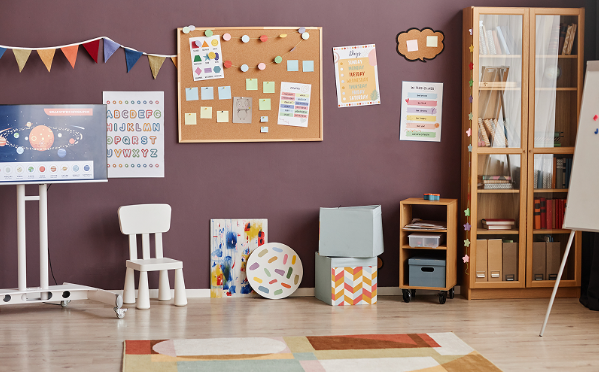Early education plays a crucial role in how children develop socially, emotionally and intellectually. Parents often compare programmes, weigh up teaching styles, and assess classroom environments when choosing where their child will start school. But surprisingly, it’s not always the obvious factors that shape successful early learning. Subtle adjustments quietly effective and easy to implement can transform a child’s experience almost overnight. These small shifts make a big difference, whether it’s a local nursery or preschool in Bukit Panjang, or even a bilingual preschool for kindergarten in Singapore. Here are seven clever strategies that deliver results without the need for an overhaul.
1. Rotate Toys Instead of Adding More
Young learners can quickly become overwhelmed or bored with too many play options. Instead of expanding the collection, rotate existing toys every week. This small shift refreshes interest, fosters curiosity, and promotes deeper engagement during play. A curated, rotating toy selection encourages children to explore objects more thoughtfully, especially in a bilingual setting where language can be reinforced through familiar items.
2. Use Incidental Language Exposure Throughout the Day
Rather than setting aside blocks of time for language instruction, weave vocabulary naturally into everyday interactions. For bilingual preschools, this means using both languages when giving instructions, naming items, or describing actions. Children at a preschool in Bukit Panjang, for example, might hear phrases like “Put the red cup in the box—cawan merah dalam kotak” during clean-up. This seamless exposure builds vocabulary retention more effectively than rigid drills.
3. Create Mini Learning Stations in Unusual Spots
Move beyond traditional classroom layouts. Set up bite-sized activity corners in unexpected places such as a reading nook under a staircase or a numbers game on the floor near the art shelf. These micro-stations can focus on specific concepts like phonics, counting, or colour matching. In bilingual classrooms, having stations labelled in both languages enhances visual recognition and word association. It’s a subtle but immediate upgrade to the environment.
4. Embrace Peer-to-Peer Teaching Moments
Children absorb knowledge rapidly when explaining ideas to each other. Facilitating moments where learners lead a song, demonstrate an activity, or retell a story empowers them to consolidate their understanding. In bilingual environments, this tactic works wonders. A child translating a story or repeating a bilingual rhyme to a friend builds cognitive flexibility and strengthens memory recall. In many kindergarten settings across Singapore, this method naturally complements dual-language goals.
5. Add Purposeful Movement to Structured Lessons
Sitting still for long periods rarely yields great results in early education. Introducing simple movements, like jumping in place while counting, or walking in circles while reciting the alphabet—anchors learning through physical memory. At a bilingual preschool for kindergarten in Singapore, pairing words with gestures also helps bridge language understanding. Physical engagement instantly livens learning and boosts attention spans without disrupting the classroom flow.
6. Repurpose Everyday Objects for Learning Tasks
You don’t need high-tech tools to create meaningful learning moments. Household items such as clothes pegs, paper plates, and bottle caps can double as learning aids. For example, a matching game using coloured caps or a counting task using spoons delivers the same benefit as commercial materials. In a preschool in Bukit Panjang, this approach can support language development and concept recognition by turning ordinary tools into vocabulary-rich experiences.
7. Let Silence Do the Teaching Sometimes
It’s tempting to fill every moment with talk, especially in bilingual settings where language exposure is crucial. However strategic silence gives children time to process, observe, and reflect. During story time or after giving instructions, a few seconds of quiet can lead to spontaneous questions or deeper thinking. This practice reinforces comprehension and gives children room to initiate conversation—in either language. It’s a surprising shift, but it often makes the most immediate impact.
Improving early education doesn’t always require dramatic interventions. These seven techniques prove that small, unexpected changes can ignite immediate improvements in attention, language development, and classroom engagement.
Whether you’re considering a bilingual preschool for kindergarten in Singapore or exploring enrolment at a preschool in Bukit Panjang, implementing these tips could make a noticeable difference from day one.
For expert-led programmes built on these principles, contact Orange Tree Preschool to explore enrolment options and visit a centre near you.


